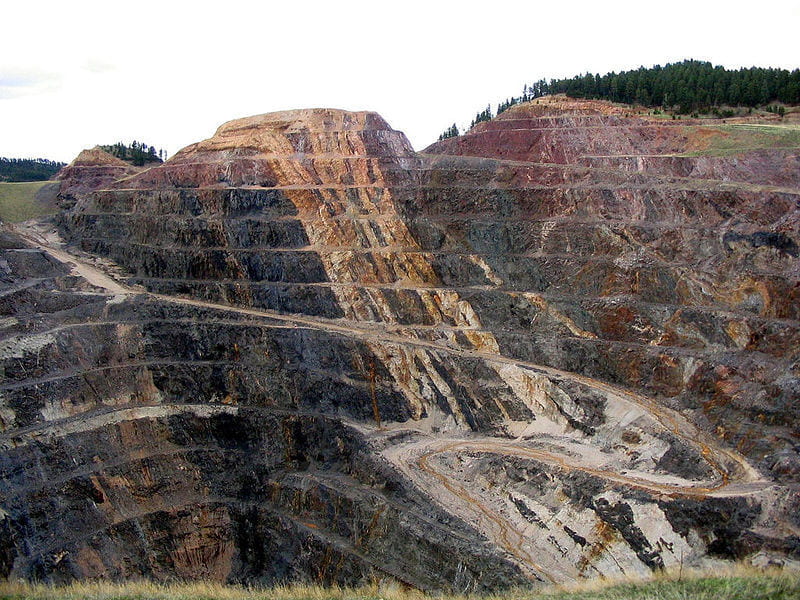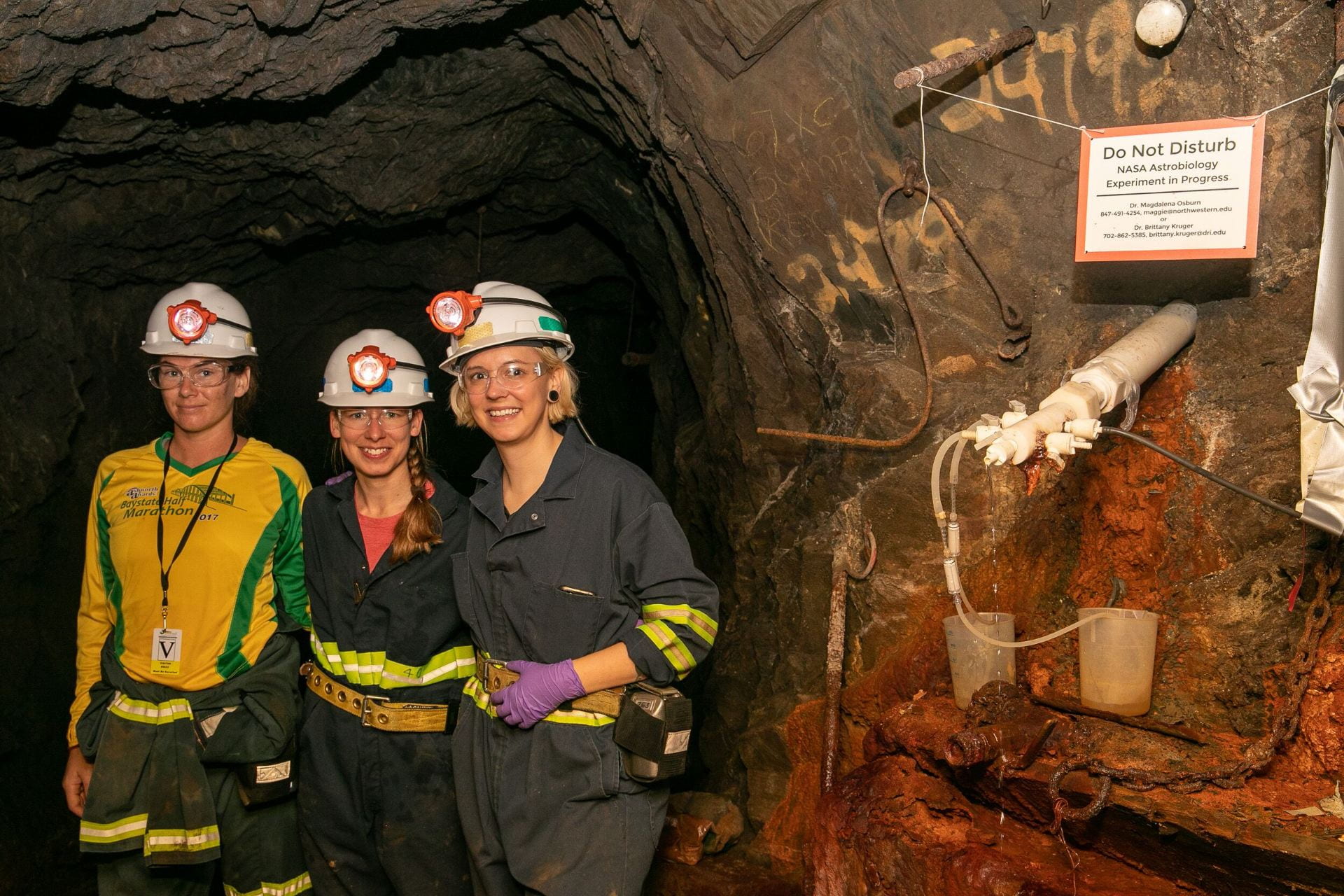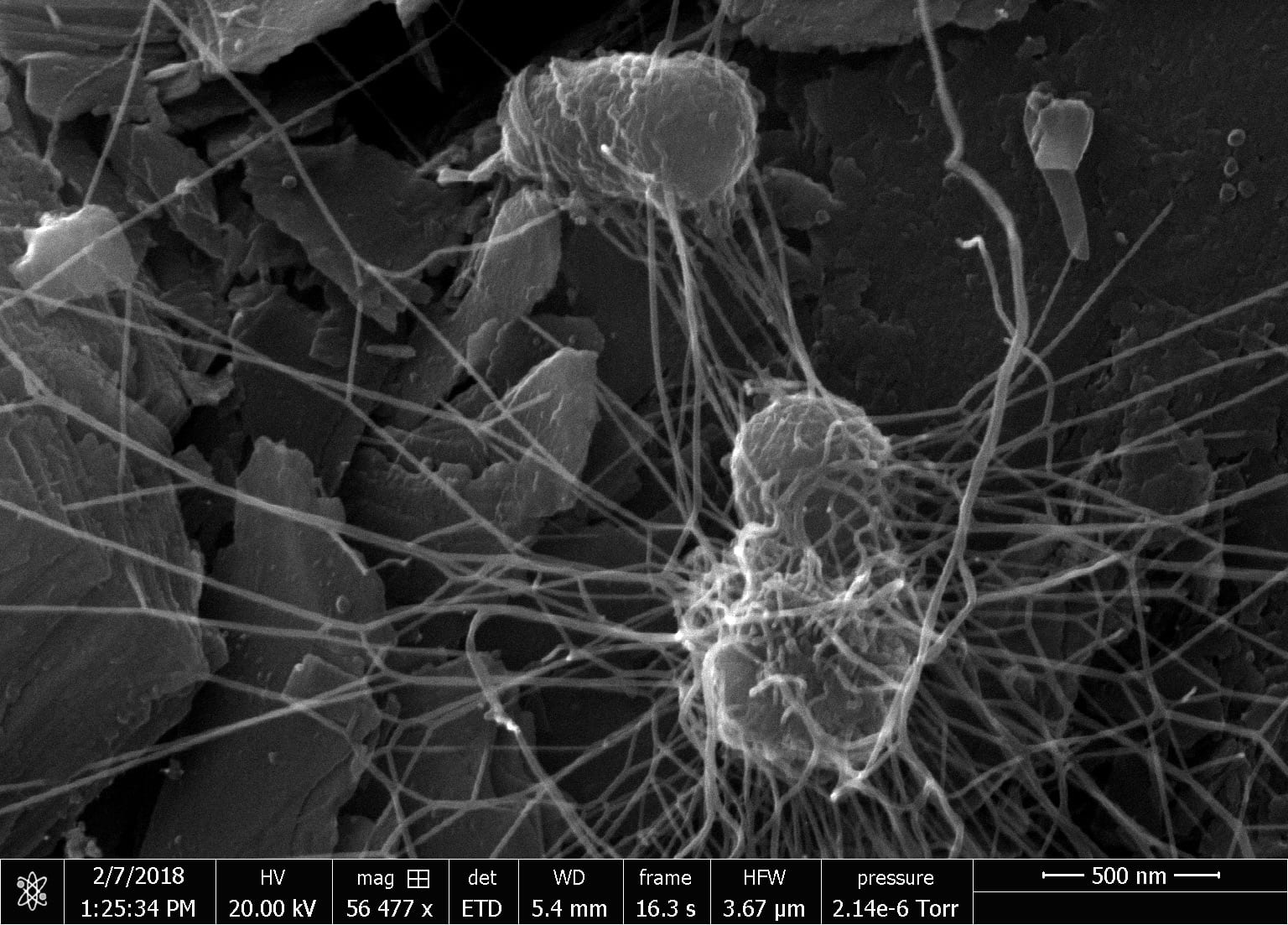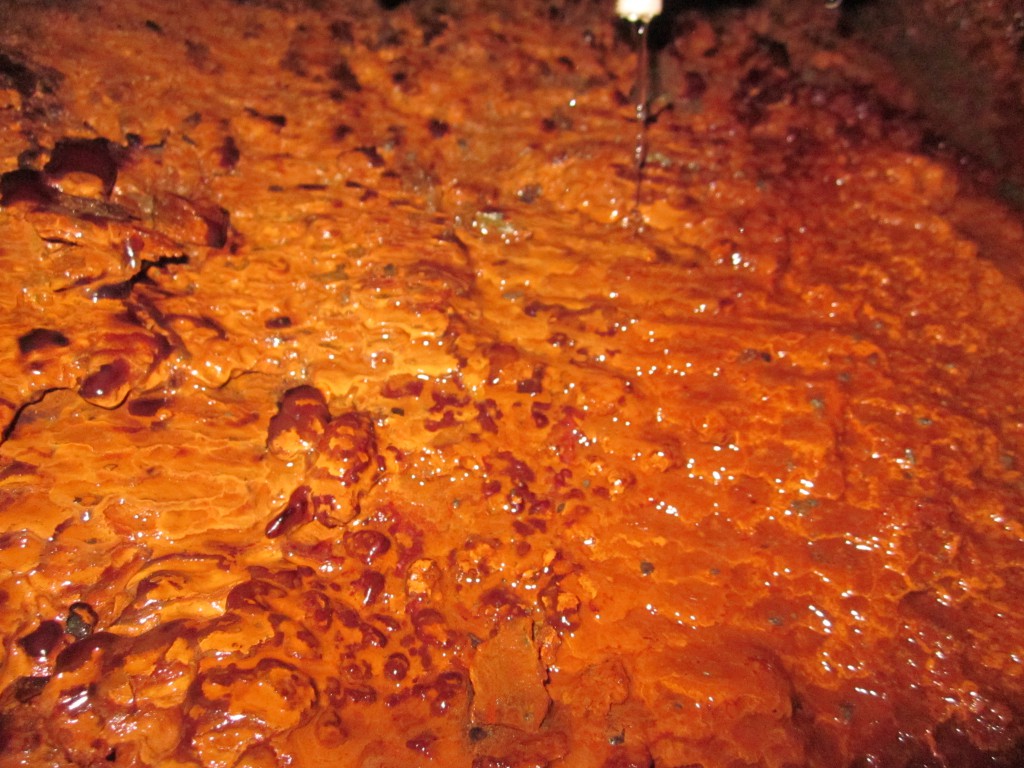Mines as Microbial Habitat

Mines can extend kilometers into the crust, allowing scientists to access areas that would otherwise be impossible. While the industrial impact of mining cannot be forgotten, the chemistry of fluids allows us to identify how isolated/old a given seep may be. The biology of these sites shows clear relationships to the rock dominated environment of the deep subsurface biosphere.

DeMMO: Deep Mine Microbial Observatory

DeMMO is located in a former gold mine in the Black Hills, South Dakota, and is our portal into the deep subsurface biosphere. Here, we can tap into fracture fluids using custom borehole installations spanning 800 to 4,850 feet. Easy access to these deep fluids has allowed us to collect geochemical and metagenomic data regularly since 2015, meaning we have a robust dataset with which we can track shifts in geochemistry and microbial populations over time. Not only do we see that the geochemical conditions and microbial populations are stable over multi-year time scales, we noticed an unusually high abundance of microbes that comprise microbial dark matter. Microbial dark matter consists of genetic material from microbes that haven’t yet been cultivated – we only know of their existence because we’ve detected their DNA. Who are these microbes and what are they doing here? Check out Osburn in prep 2020 and Momper in prep 2020 to find out!
Biofilms of the Deep

Biofilms are made of microbes that attach themselves to surfaces, as opposed to planktonic microbes that float or swim in fluids. Through our in situ experiments at DeMMO, we’ve found that deep subsurface biofilm and planktonic communities can be really different in terms of diversity and biomass. What’s driving these differences? We think it has something to do with metabolic energy that microbes can get from the minerals in the rock. Check out Casar et al. 2020 for more on this topic!

Other Mines

In addition to our long term study at DeMMO we are always interested in checking out other systems. So far we have worked on samples from the Kidd Creek Mine, Timmins Ontario ( Check out Lollar et al., 2019) and are hopeful to work in other sites sometime soon.

Publications Stemming from this work:
[24] Casar, C.P.*, Kruger, B.R., Flynn, T.M., Masterson, A.L., Momper, L.M.^, Osburn, M.R., (2020) Mineral-hosted biofilm communities in the continental deep subsurface, Deep Mine Microbial Observatory, SD, USA. Geobiology 18, 1-15, doi.org/10.1111/gbi.12391
[22] Osburn, M.R., Kruger, M., Masterson, A., Casar, C.*, Amend, J., (2019) Establishment of the Deep Mine Microbial Observatory (DeMMO), South Dakota, USA, a geochemically stable portal into the deep subsurface. Frontiers in Earth Science 7, 1-17, doi.org/10.3389/feart.2019.00196
[21] Lollar, G., Warr, O., Telling, J., Osburn, M., Sherwood Lollar, B., (2019) ‘Follow the Water’: Hydrogeochemical constraints on microbial investigations 2.4 km below surface at the Kidd Creek Deep Fluid and Deep Life Observatory. Geomicrobiology Journal 36, 1-14, doi.org/10.1080/01490451.2019.1641770
[13] Momper, L., Kiel Reese, B., Zinke, L., Wanger, G., Osburn, M.R., Moser, D., Amend, J.P., (2017) Major phylum-level differences between porefluid and host rock bacterial communities in the terrestrial deep subsurface, Environmental Microbiology Reports 9, 501-511, doi.org/10.1111/1758-2229.12563
[7] Osburn, M.R., LaRowe, D.E., Momper, L.M., Amend, J.P., (2014) Chemolithoautotrophy in the continental deep subsurface: Sanford Underground Research Facility (SURF), USA. Frontiers in Microbiology 5, 1-14, doi: 10.3389/fmicb.2014.00610


